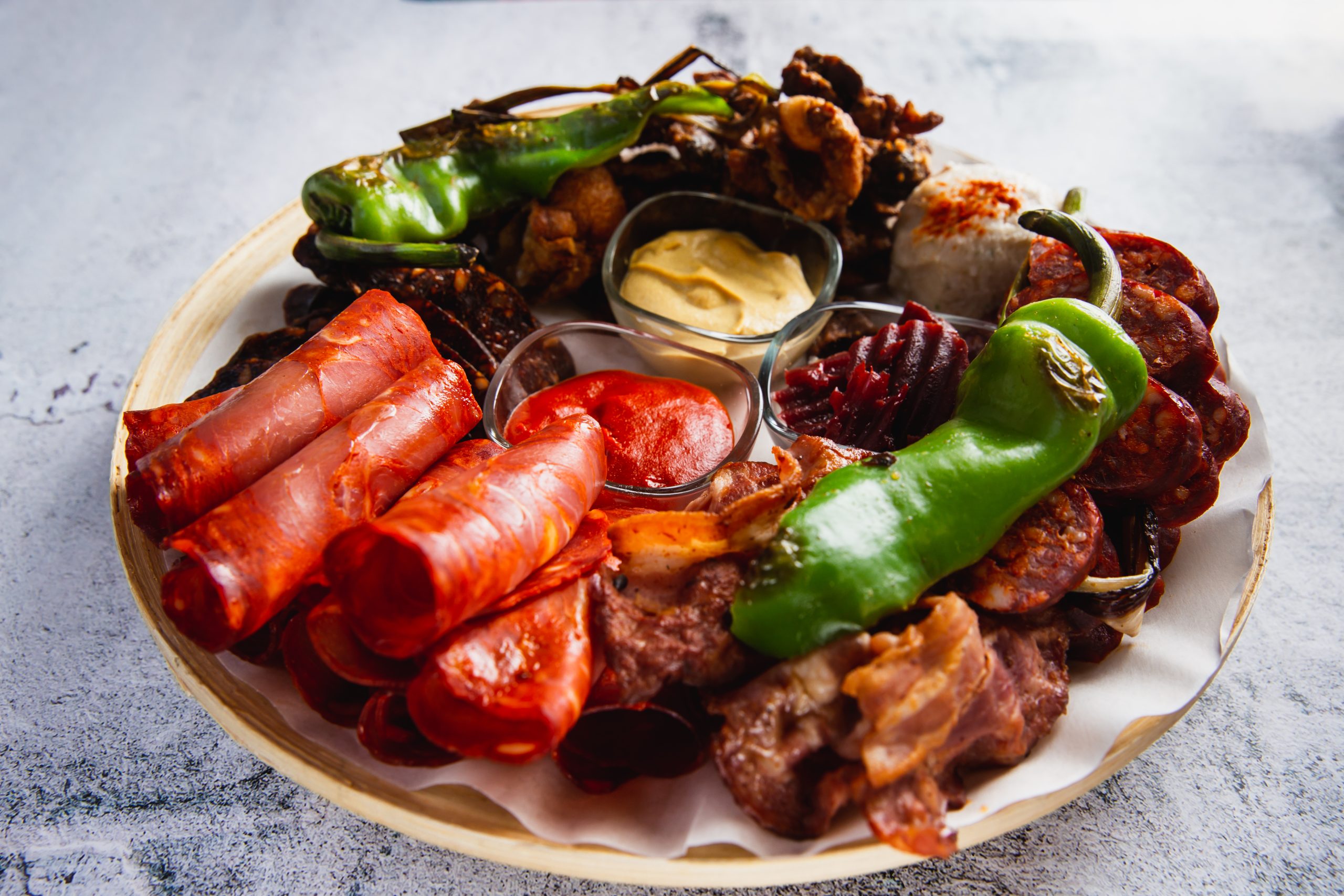
Restaurant-Quality Meals at Home: How Precooked Gourmet Options Compare to Takeout
Let’s be honest – we’ve all been there. It’s 6 PM on a Tuesday, you’re exhausted from work, and the last thing you want to
Cart
No products in the cart.
NEW YEAR SALE ENDS IN
Spend $130, Save $15. Spend $170, Save $20. Spend $200, Save $30.
Goulash is the traditional stew of Hungary. The name ‘Goulash’ comes from the word Gulyas meaning herdsmen in Hungarian, otherwise known as Magyar (Hungarian) shepherds. In the 9th century, these Gulyas traveled on long cattle drives across the grassy Hungarian plains with their long-horned, Steppe cattle. The weakest in the herd would not survive the journey and consequently the resourceful herdsmen would butcher them, making the meat into stew. For additional flavoring, they would add onions and caraway, which conveniently grew wild on the plains. The resulting dish eventually evolved into the stew we know today as Goulash. However this was not before undergoing a number of interesting adaptations.
Rachel Lauden, in the Smithsonian Journeys Quarterly, describes how groups of five or six single men, with their dogs and a couple of horses to pull their supply cart, spent months at a time out on the plains tending tall, slender gray cattle with long upturned horns. Subsequently, she explains how they cooked for themselves in large cauldrons (bograc) slung from a pole supported by posts over an open fire. They used simple, nonperishable supplies such as millet, lard, bacon, onions, salt, and sometimes black pepper.
If one of the cattle died or was slaughtered, the cowherds would feast on the meat, browning it in lard and onions, adding water and, if available, black pepper. They cooked the dish slowly until all the liquid evaporated and then dried the remnants in the sun, later putting the dried food in a bag made from sheep’s stomach. Whenever they wanted food, they took out a piece of the dried meat, added some water and reheated it.

Slowly, this rudimentary goulash was carried through and beyond the various Hungarian cattle markets, to Bratislava, Vienna and Prague. The simplicity of it facilitated its spread. Since it had no fixed ingredients, it could be adapted to suit local tastes and transcend religious divides. Thus, Catholics, Orthodox and – after the arrival of the Ottomans in the early 15th century – Muslims could enjoy it without scruple. It also began to cross social boundaries. As larger sections of the plain were given over to cultivation and the life of the herdsmen came under threat, it was adopted by farmers and smallholders. It even landed on the tables of the lesser nobility, especially in times of hardship.

During the Napoleonic wars black pepper was hard to source due to the embargo on imported goods and Turkish peppers became the preferred alternative. Locals called this spice “paprika” – pepper in Hungarian. Hungary did not know of paprika or other exotic spices until the Turks invaded Hungary and stayed for 150 years (1526 – 1699). Initially, paprika was only a decorative plant until the herdsmen started to spice their stews with it. From the herdsmen’s pots the spice found its way into peasant households and eventually into stews being served to the Hungarian aristocracy. Because the herdsmen travelled all over Europe, they introduced people from many other countries to their paprika flavored goulash. Foreign countries adapted the spice into their own versions of goulash, adding ingredients such as wine and brown sauce that remained alien to the authentic Hungarian recipe.

In the 1830’s Hungarian goulash began to appear in urban kitchens, cookbooks and restaurants as part of a movement to promote Hungarian traditions that were losing identity under the Habsburg dynasty and invasive German culture. Alongside this culinary focus, writers began publishing newspapers in Hungarian, collecting folk tales, and authoring plays and poems about their country’s glorious past. Composers even adopted the rhythm of the peasant dance, the csárdás, which became respectable in urban ballrooms while painters depicted noble herdsmen with their wide trousers, hats with upturned brims, and embroidered waistcoats. During this period Goulash became Hungary’s national dish.

In 1867, Hungary enjoyed greater autonomy, and the new government encouraged economic development. Chili peppers flourished in the hot summers of the southernmost parts of the Hungarian plain. This was the case particularly around the ancient towns of Szeged and Kalocsa. By the beginning of the 20th century, over a dozen paprika mills lined the banks of the Tisza River in Szeged. However, customer demand was for a milder but still colorful spice.
In 1920, just two years after the fall of the Austro-Hungarian Empire, a grower in Szeged discovered a variety whose fruit was much sweeter than any other. By grafting it onto other plants he was able to create a paprika that was cooler and more flavorsome. This came with the invention of a machine to split the dried peppers and remove the white ribs and seeds, the source of the chilies’ heat. With this new Szeged “noble sweet” paprika, dishes could be created that satisfied even the refined tastes of the aristocracy.

France’s Auguste Escoffier, “the king of chefs and the chef to kings,” imported paprika from Szeged and served Goulash à la Hongroise in Monte Carlo in 1879. When Escoffier included the recipe in his 1904 Le Guide Culinaire, a worldwide reference, he ensured its place in the fine dining traditions of Europe. His recipe called for the addition of bell peppers, tomato paste, fresh Cremini mushrooms and dried mushrooms. Károly Gundel, one of Hungary’s most esteemed chefs, included not one but many variants in his cookbooks. Several recipes included sour cream to enrich the sauce.

By the end of the 19th century, goulash was firmly in the international lexicon of beef stew seasoned with paprika. However, oddly, in Hungary the term goulash was reserved for soups whereas pörkölt was used for the stew. Served with thickly sliced dumplings, or csipetke (egg noodles), goulash had, by the outbreak of WWII, become perhaps the most common Hungarian food.

Like many dishes, Hungarian goulash came to America with immigrants, who arrived in the late 19th century. An early recipe for “Gulash,” found in in The Settlement Cook Book 1903, contains the essentials of the dish: Beef, onions, paprika and tomatoes. During the great food awakening of the 1960s, Americans became interested in the cuisines of their immigrant ancestors. Consequently, Hungarian Goulash became popular as a fancy hostess dish. In a 1969 Gallup poll, Americans named it as their fifth favorite food.

For Budapest’s best Hungarian goulash, head to Budapest Bisztró, known for its legendary Gulyás soup country wide. Located just a stone’s throw from Kossuth Square and Parliament, Budapest Bisztró is a modern venue with a rich choice of traditional dishes, impeccable service and atmosphere. Can’t get to Hungary? Try the next best thing – Healthy Gourmet’s authentic tasting Goulash, appearing soon as one of our new global flavors!
https://www.smithsonianmag.com/travel/goulash-origins-food-history-atlas-of-eating-soup-smithsonian-journeys-travel-quarterly-danube-180958690/.
https://www.kitchenproject.com/history/Goulash/.https://theculturetrip.com/europe/hungary/articles/a-brief-history-of-hungarian-goulash/.
https://www.britannica.com/topic/goulash.https://www.historytoday.com/archive/historians-cookbook/goulash.
https://www.budapestbylocals.com/hungarian-goulash.html.http://thefoodiescompanion.blogspot.com/2013/11/food-history-hungarian-goulash.html.
https://www.economist.com/1843/2018/11/15/who-really-invented-goulash.
https://www.itshungarian.com/goulash-secrets/interesting-facts-about-the-hungarian-goulash/.
http://www.budapest-discovery-guide.com/hungarian-goulash-recipe.html.
https://forknplate.com/2015/04/15/goulash-fascinating-dish-necessity/.
https://dailynewshungary.com/10-iconic-hungarian-food-and-drinks-you-must-try-in-budapest/.
https://www.tasteatlas.com/50-most-popular-dishes-in-hungary.

Let’s be honest – we’ve all been there. It’s 6 PM on a Tuesday, you’re exhausted from work, and the last thing you want to

We’ve all been there—it’s the end of a long day, and the last thing you want to do is cook. The automatic response? Open a

Summer just got here, and this heat already has us dreaming of a sweet island getaway. That’s why this month we turned to the beautiful

Check out how EatFlavorly utilizes Mexican meats and so many more in our scratch-made meals over at Our Menu! With Cinco de Mayo